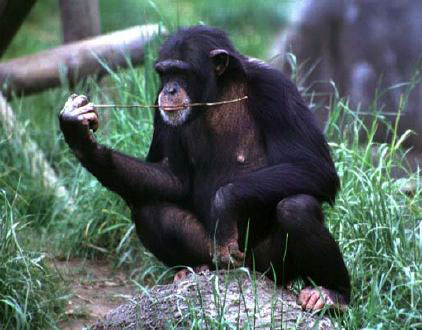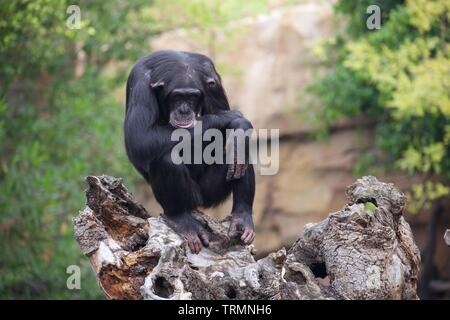
By applying this approach, the aim is therefore to favour environments that are similar to the species’ ecological niche, in other terms recreate the animal’s natural environment.
Chimpanzee diet in captivity live food full#
The naturalist approach considers that an animal must be able to live its natural life (Rolin, 1993), namely perform its species’ full behavioural repertoire.

The different historical approachesĭiffering notions of welfare, which more or less take into consideration the different needs and wants of animals, have led to the development of three approaches to improving animal welfare: the naturalist approach, the adaptive approach and the mental approach (Young 2003). The ergonomic approach can reduce injury and increase the animal’s comfort by creating suitable facilities, and is itself called « enrichment ». Principles of ergonomics are therefore applied to animals, seen as agents that carry out certain tasks: feeding, resting and moving. The latter will first impact behaviour (presence of stereotypies, self-mutilation, aggression), physiology (increase in cortisol indicating high levels of stress, ulcers, decrease in noradrenaline), neurology (decrease in brain cell density, decrease in cerebral plasticity, memory), then production (absence of milk, impact on growth, absence of reproduction) and finally the animal’s health (decrease in immune response, weight loss and illness)(Veissier & Boissy 2009). These signs increase in rate and amplitude based on the intensity of the constraint imposed or suffering felt. Obvious signs can be used to understand whether an animal, whatever its species, is suffering or in a state of unease. These needs are assessed by studying an animal’s physiology, movements and posture. There are many behavioural needs, such as living space, sociality and the capacity to move, flee, hide or hunt (Vilanova & Smith 2014).Īn analysis of animals’ needs allows us to better define what would be their ideal environment. Animal welfare is defined as the absence of suffering and the respect of animals’ needs, not only imperative and nutritional – which would mean good treatment – but also behavioural. Introduction to enrichmentĮnvironmental enrichment is a concept which describes how the environments of captive animals can be changed for the benefit of the inhabitants, thus enhancing their welfare (Hill & Broom 2009). Once again, such improvements can only be made if there is an understanding in the biology and ethology of the species held in captivity but also by incorporating the principle of animal welfare at all levels of society. In terms of food, major problems are often noted for the particular class of social carnivores but in general there is very little diversity in the composition of food or its spatial or temporal distribution. But there is room for other improvements, particularly for social enrichment: the important presence of animals of the same species is often overlooked. Much progress has been made in terms of physical enrichment: size of pen or presence of structures and accessories are now seen as a priority, particularly at zoos. Five enrichment categories can be defined: physical, social, dietary, sensory and cognitive. This of course requires specific knowledge of the animal’s behavioural repertoire in its natural environment, but also of its ecology and biology in general. (3) an increase in the positive and full use of the captive environment. (2) a reduction in the frequency of abnormal behaviours (stereotypies for example), and finally

(1) an increase in behavioural diversity, These enrichments must allow the animal to enjoy daily activity that satisfies its physical, physiological and cognitive needs, which in concrete terms is shown by For several years, livestock breeders and zoos have been working to increase the welfare of their animals by applying ergonomic principles otherwise known as environmental « enrichments ». AbstractĪnimal welfare can be defined on the principle that a captive animal must present no prolonged negative emotional states thanks to physical and social environments that allow it to express its full behavioural repertoire and maintain its homeostasis.

(Eds), Animal Welfare: From Science to Law, 2019, pp.175-188. & Pelé M., « Importance of living environment for the welfare of captive animals: behaviours and enrichment », In: Hild S. To cite this article (suggested): Sueur C. B Ethobiosciences, consulting in animal welfare and animal behaviour research and expertise, Strasbourg, France


 0 kommentar(er)
0 kommentar(er)
